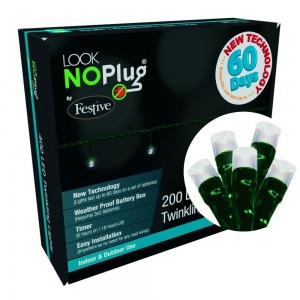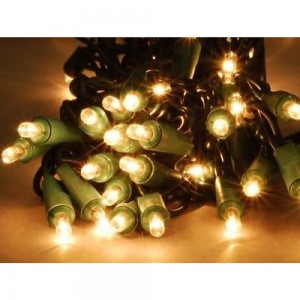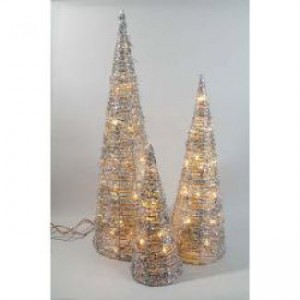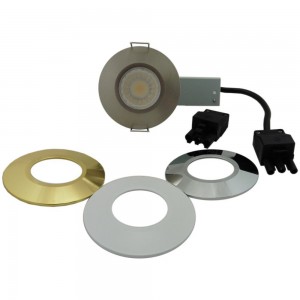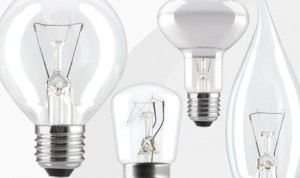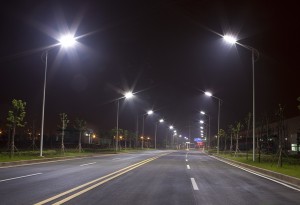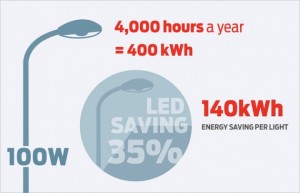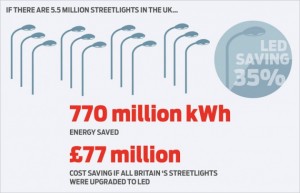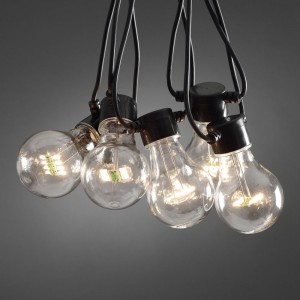Some months ago, Lux Review opened this discussion with Dimming LED lamps: the dos and don’ts. Here we delve further into the issue and look at what it means once the decision’s taken to go ahead with a dimmable LED installation.
Here are a few things that you need to avoid:
- Flicker
- Flashing
- Stuttering dimming
- Insufficient dimming
- Failed LED driver
- Failed dimmer
These are all inconveniences that are await you should you mismatch the electronics of the LED driver and the dimmer.
Choose the dimming method first
There are thousands of different dimmable LED light fixtures on the market, but only three major types of dimming method: mains dimming, Dali or DMX. (see box, below) So choose what kind of dimming you want before you select any LED luminaires. More lighting control manufacturers are providing lists of LED products that they have tested for compatibility with their equipment and this is a very useful service to any specifier.
Don’t buy cheap drivers
 Most lighting control systems offer a variety of dimming protocols, the languages which they use to communicate with the lamp or driver. When you’ve chosen the method that’s right for your installation, you need to get LED drivers which match the performance and the protocol. A common problem lies in the design and build quality of the LED driver, leading to poor performance and occasional failure of either the LED or the dimmer circuitry.
Most lighting control systems offer a variety of dimming protocols, the languages which they use to communicate with the lamp or driver. When you’ve chosen the method that’s right for your installation, you need to get LED drivers which match the performance and the protocol. A common problem lies in the design and build quality of the LED driver, leading to poor performance and occasional failure of either the LED or the dimmer circuitry.
For instance, the digital signaling from a Dali control system cannot always be translated by the driver into the appropriate lighting state that’s required. Beyond a certain level of dimming, the LEDs may simply switch off. But be pragmatic; if you’re only looking for dimming down to 50 per cent there’s no need to search for a driver that will take the lighting down to 5 per cent.
Similarly, where DMX signaling is ideal for colour-change installation, not all RGB drivers can cope with the demands of the system, and that can lead to some very poor colour effects. There’s a simple commercial equation that should be borne in mind: cheap = risky. Avoid cheap specifications, particularly of products like LED tape (see our recent review of LED tape) and always check with the control manufacturer that your preferred LED product is compatible with their system.
Test before you buy
In the domestic and small commercial environment, the lighting specification is very likely to be built around retrofit LED lamps, but the ‘retrofit’ title is becoming a misnomer because there are many new specifications making use of the technology to deliver relatively low-cost installations.
Being designated ‘retrofit’, customers often think that’s all there is to it and will simply swap a tungsten halogen lamp for an LED lamp. It doesn’t help that manufacturers of these LEDs also suggest the same thing on their packaging. But remember that this is an unregulated marketplace, so it’s very important to check that the proposed dimmer works with the selected LED lamp before committing to a specification. Test before you buy.
Although safety standards are still required in the manufacture of the LED because it’s an electrical product, there is no standard based on the performance of an LED. Each manufacturer produces LED products according to their design parameters and comparing two apparently similar products can be a nightmare of dissimilar specification reporting.
Use dimmers designed for LEDs
Most domestic dimmers are still designed for tungsten loads, typically rated at 250W and 400W, which is far higher than the electrical loading of the LED lamps taking over from them. Some domestic dimmers cannot ‘read’ the low loading of a LED lamp, so requiring an additional electrical load to be connected in order that the light will be recognized by the dimmer, contrary to any desire to reduce energy consumption, of course.
The simple answer is to use only those dimmers that have been designed for LED loads. More of these dimmers are becoming available, and are designed to operate at far lower loads. There is also a new style of intelligent dimmers – such as the Hamilton LEDstat – that take full advantage of new electronic technology, enabling it to match its performance with the requirements of the connected LED lamps.
Check the LED lamp fits – many don’t
All retrofit lamps are intended to replace an existing filament lamp, tungsten or tungsten halogen. That means that there are alternatives across the range, from the ordinary GLS lamp (the light bulb), to directional lamps for spotlighting and even chandelier-style candle lamps, some of which work to great, sparkling, effect. The inherent problem in every retrofit lamp is the limitation on physical size.
A retrofit lamp is no good if it doesn’t fit in the intended light fixture. And however perverse this may sound, that essential feature of a retrofit lamp hasn’t stopped some LED lamp manufacturers from producing lamps that simply don’t fit. It might make for a better engineered product, but it may not fit into the required fixture – so it’s good to check.
Only buy brands you trust
All of the LED circuitry, usually found in a separate driver housing in the more upmarket architectural luminaires, has to be contained within the given physical space of a retrofit lamp. And if the lamp is dimmable (and please remember that not all of them are) that means that the dimming components must also be housed in the same tiny space. This can cause thermal and mechanical stress and seriously affect the life of the lamp.
Buying anything with confidence means knowing the provenance of the product, and this is of primary importance when purchasing LED retrofit lamps. Either trust the brand, or trust that the company that you’re buying from has done the necessary investigations into the product’s quality. Never buy on-line unless you know the product or the company.
Be super cautious of GU10 lamps
 GU10 LED lamps are replacements for mains voltage tungsten halogen lamps and are probably the single most popular of all LED retrofit lamps. The ubiquity of the downlighter has ensured that this lamp will survive long after the ‘retrofit’ tag becomes meaningless.
GU10 LED lamps are replacements for mains voltage tungsten halogen lamps and are probably the single most popular of all LED retrofit lamps. The ubiquity of the downlighter has ensured that this lamp will survive long after the ‘retrofit’ tag becomes meaningless.
A dimmable GU10 lamp is a very busy piece of equipment indeed. Every LED source is an SELV (safety extra low voltage) device, so the GU10 also needs to house a transformer, as well as its dimmable driver components.
Because of the unregulated nature of LED manufacture, ensuring product worthiness of these GU10 lamps is an absolute priority. If you’re looking for a dimmable version, it’s all the more important to know what you’re buying and to trust who you’re buying from. Start by checking out our recent review of GU10 lamps.
Only use a LED MR16 LED if it comes with its own separate driver
 There is an alternative to the GU10 lamp but it tends to be sidelined because it suffers from the same problem as the original low voltage lamps – it requires a separate component.
There is an alternative to the GU10 lamp but it tends to be sidelined because it suffers from the same problem as the original low voltage lamps – it requires a separate component.
The LED MR16 lamp is the LED retrofit for the 12V tungsten halogen lamp. Although the 12V tungsten halogen lamp was superior to the GU10 mains voltage halogen alternative, it lost ground to the GU10 because it was more expensive, requiring a transformer that had to be mounted close by, usually in the ceiling void adjacent to the downlight containing the lamp.
The low-voltage MR16 LED lamp is also a superior lamp to the GU10 lamp because there is less stress in the lamp housing as the transformer electronics are remote from the housing. But there is a risk of this benefit being outweighed by a disadvantage. Most MR16 LED lamps are advertised as being compatible with tungsten halogen transformers and this is not necessarily the case. Electronic incompatibility rules supreme in these circuits and there have been plenty of flashing LEDs in evidence to demonstrate that truth.
The best way to use a dimmable LED MR16 lamp is to select a lamp that is supplied with its own remote driver housing. This provides the additional benefit of removing even more circuitry from the lamp housing so leaving maximum space for the light source to do its work.
Never mix and match
It’s never a good idea to mix LEDs from different manufacturers on the same dimming circuit. On the basis that every LED will have its own design of electronic circuitry, the dimmer probably won’t be capable of providing a common signal to each light source. This is a recipe for flicker and hum. While this restriction may be a headache for some of the more creative schemes, it’s a sound precautionary measure. And if it icreative schemes, but demonstrate that truth. source to do its work.ox). s essential to the scheme, we recommend that you mock-up the entire circuit on a workbench to test the design.
Because there are no performance standards for LED lamps and drivers it’s impossible to know whether future replacement equipment will operate in the same way as those originally installed, even if the new lamps are from the same company and carry the same part number. The same compatibility checking process has to start again, though it’s probably safe to assume that the dimming equipment won’t be compromised.
And when it comes to an isolated lamp failure in a circuit, the expensive news is that it’s best to change all of the lamps on that circuit to prevent a mismatch in circuit characteristics. It’s a damage limitation exercise and ensures that, with the proper checks mentioned above, the installation will continue to perform as required.
Check, check and check again
The message that is heard repeatedly is not to assume and always to check. The days when a filament lamp could be dimmed by almost anything and would always perform in the same way are gone. We are now in a world where electronic circuitry speaks to electronic circuitry and there is no over-arching standard yet in place to guarantee a unified performance.
So check:
Speak to the lighting control manufacturer. Have they tested the LED that you’d like to use and are they happy to see their equipment connected to it?
If you’re able, run a test yourself in as close to the operating conditions as possible.
Check minimum dimmer loadings if the dimmer is required to control just one of two LED lamps and, if so, test it yourself. And, if necessary, be prepared to adjust the scheme design to keep the LED-dimmer interface within safe operational bounds.
Check out our range of dimmable LED lightbulbs – http://www.lamps2udirect.com/led-light-bulbs/12
Picture: USAI Lighting – Article By Lux Lighting.



